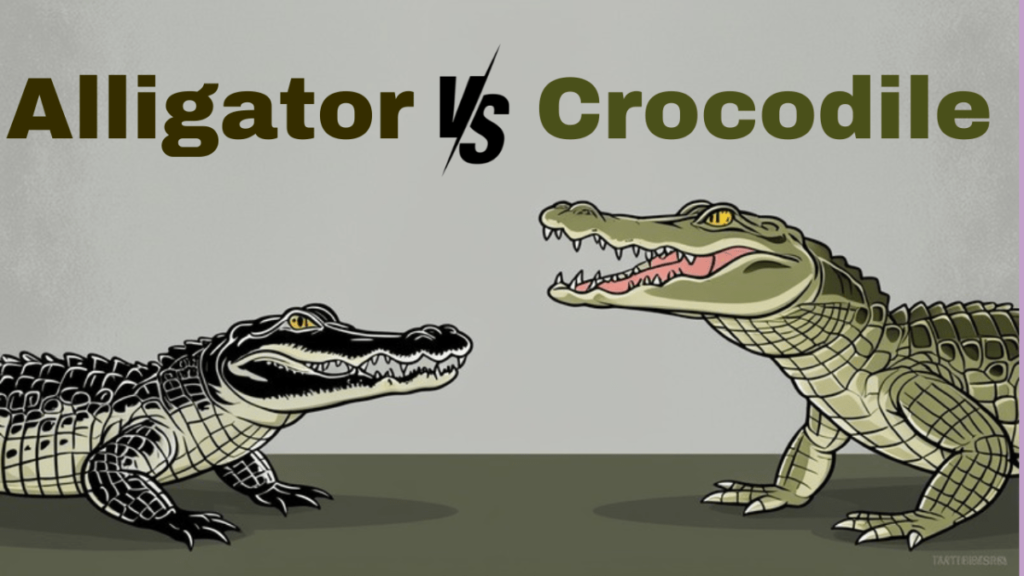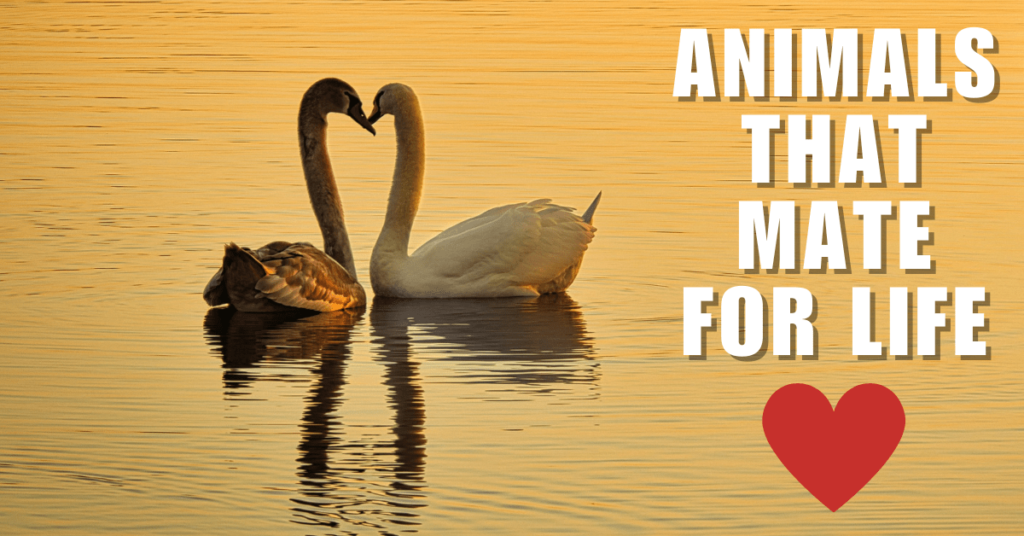The debate of Alligator vs Crocodile has intrigued many, sparking curiosity about the differences between these two powerful reptiles. Both alligators and crocodiles belong to the order Crocodylia, yet they are distinct in various ways that go beyond their physical appearances.
These differences are not just fascinating to wildlife enthusiasts but are also crucial for people living in regions where these reptiles coexist. Misidentifying these animals can lead to potentially dangerous situations, as their behaviors and levels of aggression can vary significantly.
In this article, we’ll explore the key differences between alligators and crocodiles, diving into their taxonomy, physical characteristics, habitats, behavior, and more, to provide a comprehensive understanding of these ancient reptiles.
Alligator vs Crocodile
1. Identification Differences:
These distinguishing features will help you identify whether you’re looking at an alligator or a crocodile.
| Feature | Alligators | Crocodiles |
|---|---|---|
| Snout Shape | Broad, U-shaped | Narrow, V-shaped |
| Teeth Visibility | Lower teeth hidden when mouth is closed | Lower teeth visible when mouth is closed |
| Coloration | Darker, often black | Lighter, olive-brown |
| Skin Texture | Smoother | Rougher, more rugged |
| Habitat Preference | Freshwater environments | Freshwater and saltwater environments |
| Behavior | Less aggressive, more reclusive | More aggressive, territorial |
| Size | Typically smaller (up to 13-15 feet) | Generally larger (up to 23 feet) |
2. Taxonomy and Species Overview
2.1. Alligator Species
Alligators belong to the family Alligatoridae, which also includes caimans. The two most notable species are the American Alligator (Alligator mississippiensis) and the Chinese Alligator (Alligator sinensis).
The American Alligator is native to the southeastern United States, particularly in states like Florida, Louisiana, and Georgia. It is a conservation success story, having recovered from the brink of extinction in the 20th century.
The Chinese Alligator, on the other hand, is critically endangered, with a population that has dwindled to fewer than 150 individuals in the wild. Conservation efforts are ongoing, but habitat loss continues to threaten its survival.
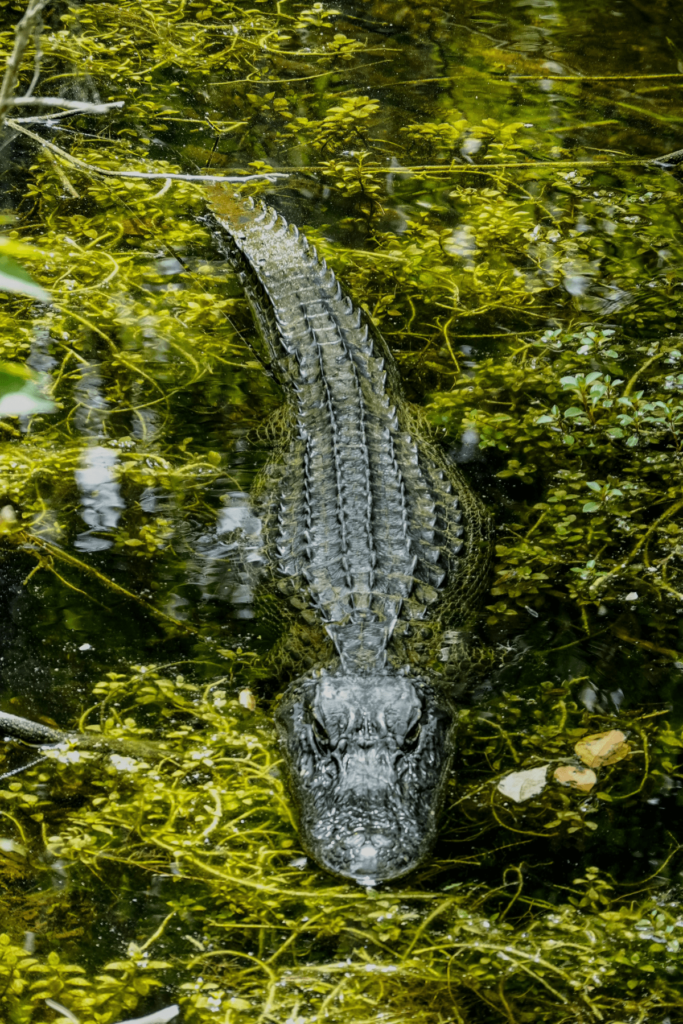
2.2. Crocodile Species
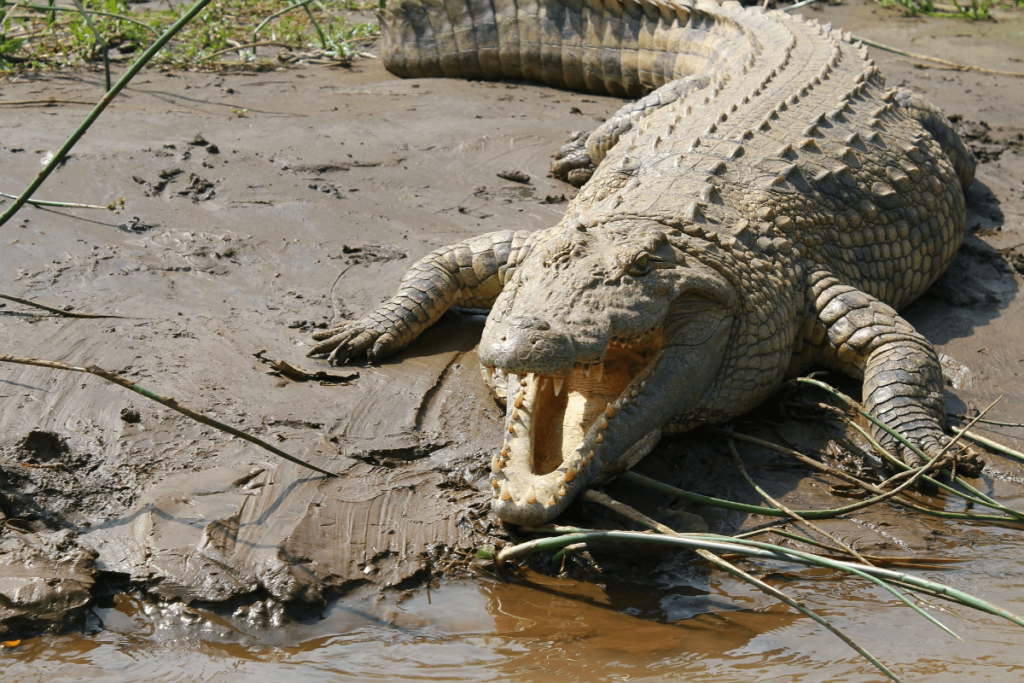
Crocodiles fall under the family Crocodylidae and are more widespread globally compared to alligators. Among the most well-known species are the Nile Crocodile (Crocodylus niloticus), the Saltwater Crocodile (Crocodylus porosus), and the American Crocodile (Crocodylus acutus).
The Nile Crocodile is prevalent in Africa, especially in the rivers, lakes, and marshlands of sub-Saharan Africa. The Saltwater Crocodile, the largest of all living reptiles, is found in coastal regions, estuaries, and rivers across Southeast Asia, northern Australia, and parts of the Indian subcontinent.
The American Crocodile, which is often mistaken for the American Alligator, resides in the warmer waters of Central America, the Caribbean, and the southern tip of Florida.
3. Physical Differences
3.1. Size and Weight Comparison
When comparing alligator vs crocodile in terms of size, crocodiles are generally larger. The Saltwater Crocodile, for instance, can grow up to 23 feet and weigh over 2,200 pounds, making it the largest living reptile. In contrast, the American Alligator typically reaches around 13-15 feet and weighs up to 1,000 pounds.
The size difference is not just a matter of length; it also reflects their different hunting strategies and prey preferences. Larger crocodiles are capable of taking down much bigger prey, including large mammals like zebras, wildebeest, and even sharks, whereas alligators usually prey on smaller animals.
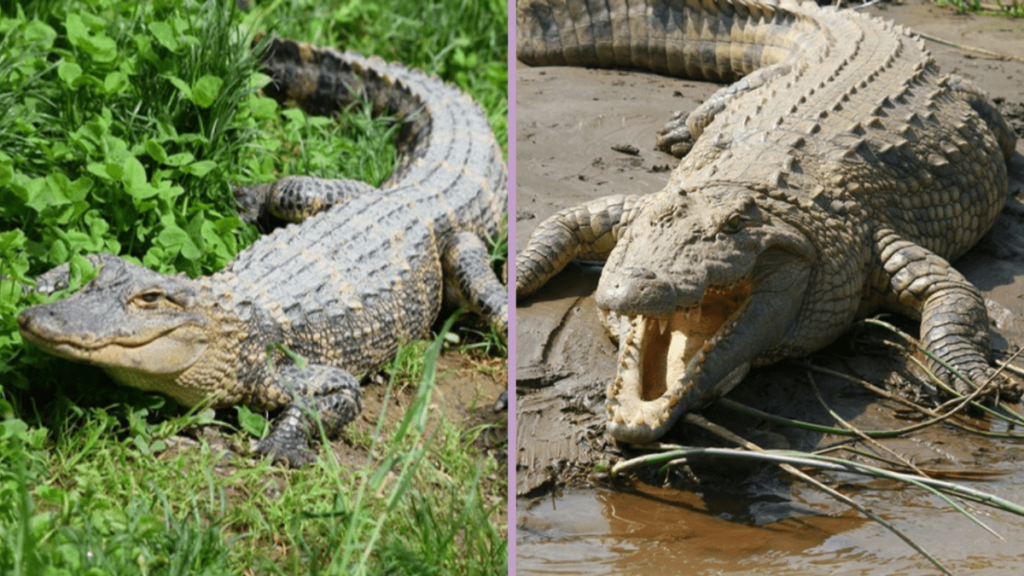
3.2. Snout Shape and Structure
One of the most noticeable difference between alligator and crocodile is the shape of their snouts. Alligators have a broader, U-shaped snout, which is suited for crushing prey like turtles and hard-shelled mollusks. Their strong, rounded snout provides them with the power to exert significant pressure, which is essential for their diet.
Crocodiles, on the other hand, have a more V-shaped, pointed snout, which aids in catching fish and other agile prey. The narrow, elongated snout allows crocodiles to close their jaws quickly and efficiently in water, making them more effective hunters in aquatic environments.
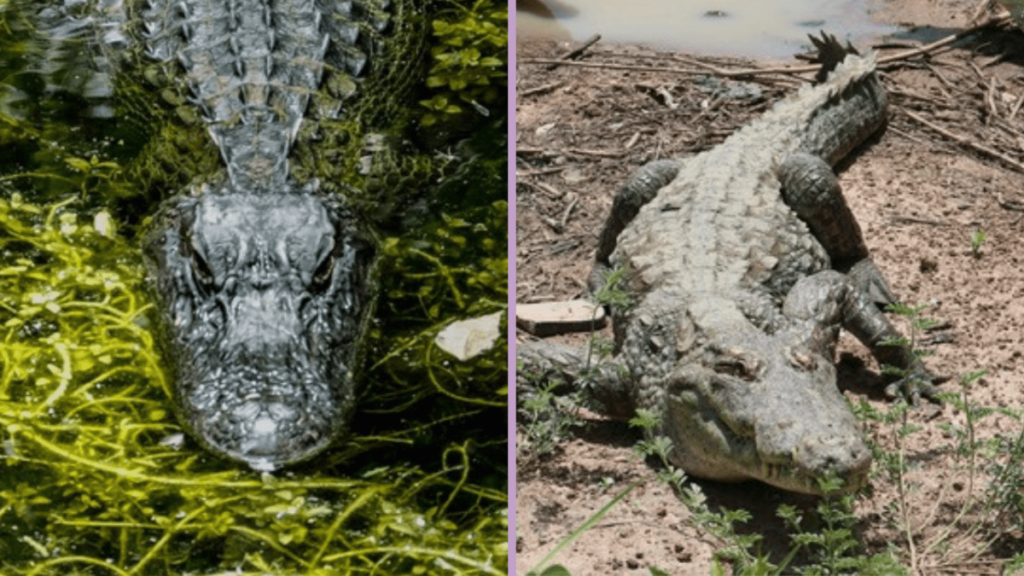
3.3. Jaw and Teeth Configuration
The differences between alligators and crocodiles are also evident in their jaws and teeth. In alligators, the upper jaw is wider than the lower, so the teeth of the lower jaw are hidden when the mouth is closed. This gives alligators a “toothy grin” that is less menacing than that of crocodiles.
Crocodiles, however, have a jaw where the upper and lower jaws are of equal width, allowing the teeth of the lower jaw to be visible even when the mouth is shut. This interlocking tooth pattern gives crocodiles a more aggressive appearance and is a key feature that distinguishes them from alligators.
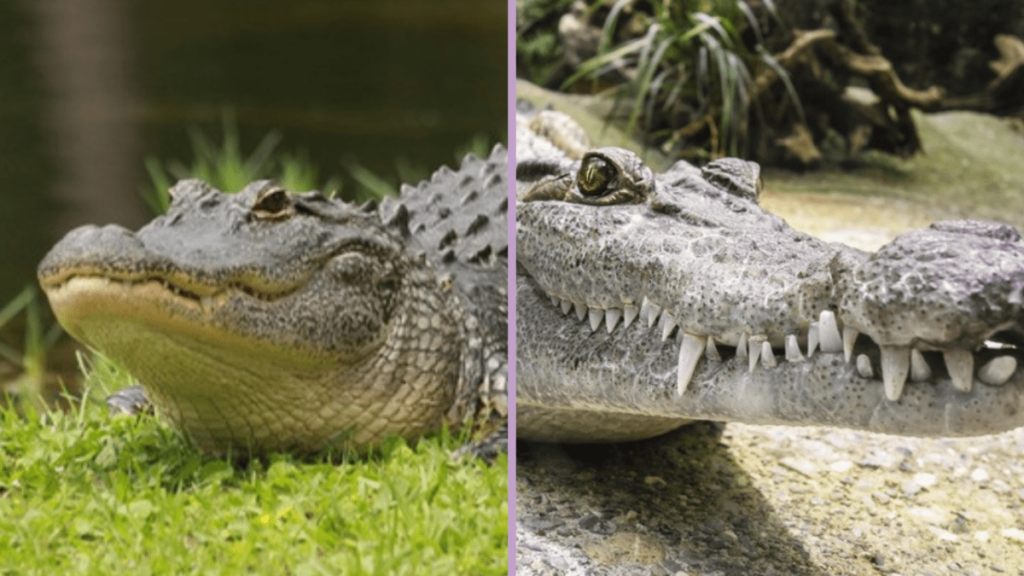
3.4. Coloration and Skin Texture
Crocodiles tend to have a lighter, olive-brown coloration, which helps them blend into the muddy riverbanks and estuaries they often inhabit. Their skin is rougher and more rugged compared to the smoother skin of alligators, which is darker, often appearing almost black.
This dark coloration allows alligators to remain camouflaged in the shaded waters of their freshwater habitats. The differences in skin texture and coloration are adaptations to their respective environments, providing them with better concealment from both predators and prey.
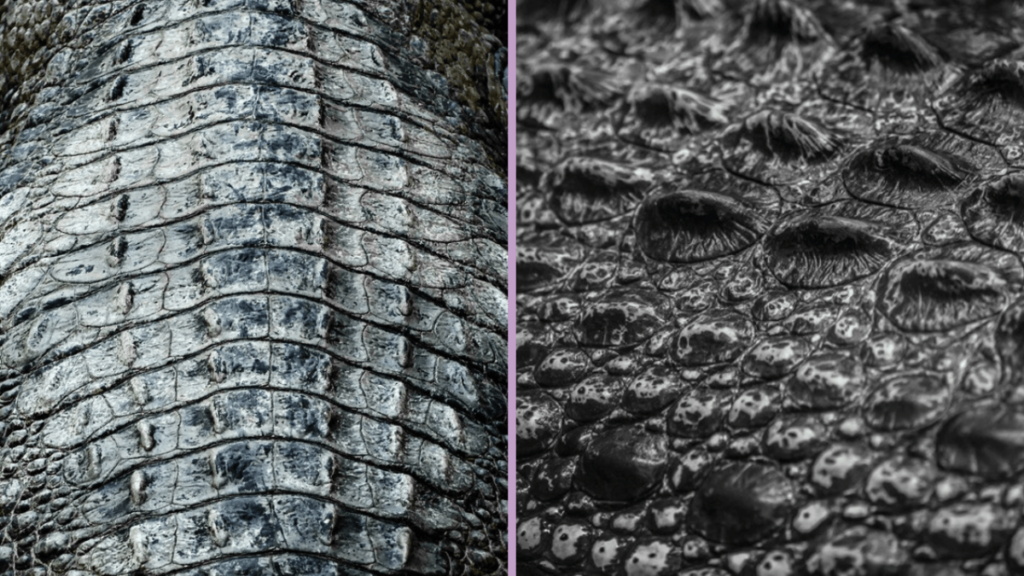
4. Habitat and Geographic Distribution
4.1. Alligator Habitats
When asking what’s the difference between an alligator and a crocodile, another important factor to consider is their habitat, with alligators primarily found in freshwater environments and crocodiles often living in saltwater.
Alligators are primarily found in freshwater environments such as rivers, lakes, swamps, and marshes. The American Alligator is predominantly found in the southeastern United States, particularly in the Everglades of Florida, where they play a crucial role in maintaining the ecological balance.
These habitats provide the warm, slow-moving waters that alligators prefer, along with ample vegetation that helps them construct their nests. The Chinese Alligator, though less well-known, inhabits the Yangtze River Basin, where it relies on similar freshwater ecosystems.
Alligators prefer freshwater habitats with slow-moving water, abundant vegetation, and warm temperatures. They are less tolerant of saltwater, although they can survive in brackish environments for short periods.
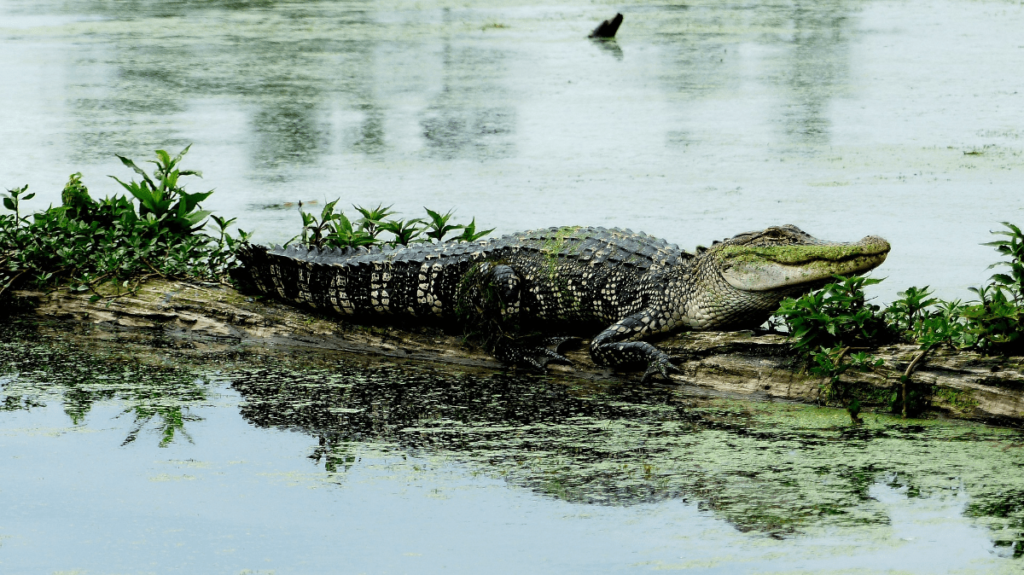
4.2. Crocodile Habitats
Crocodiles have a wider habitat range, inhabiting both freshwater and saltwater environments. The Saltwater Crocodile, for instance, is found in coastal regions, estuaries, and rivers across Southeast Asia, Australia, and the Indian subcontinent.
This species is highly adaptable and can travel between freshwater and saltwater, often being spotted far out at sea. The Nile Crocodile, on the other hand, is commonly found in freshwater bodies like rivers, lakes, and marshes throughout sub-Saharan Africa, where it is a top predator.
Crocodiles are more versatile, thriving in both freshwater and saline environments, thanks to their specialized salt glands that allow them to excrete excess salt. This adaptability is one of the reasons crocodiles have a more extensive geographic distribution, ranging from the rivers of Africa to the coastal waters of Australia.
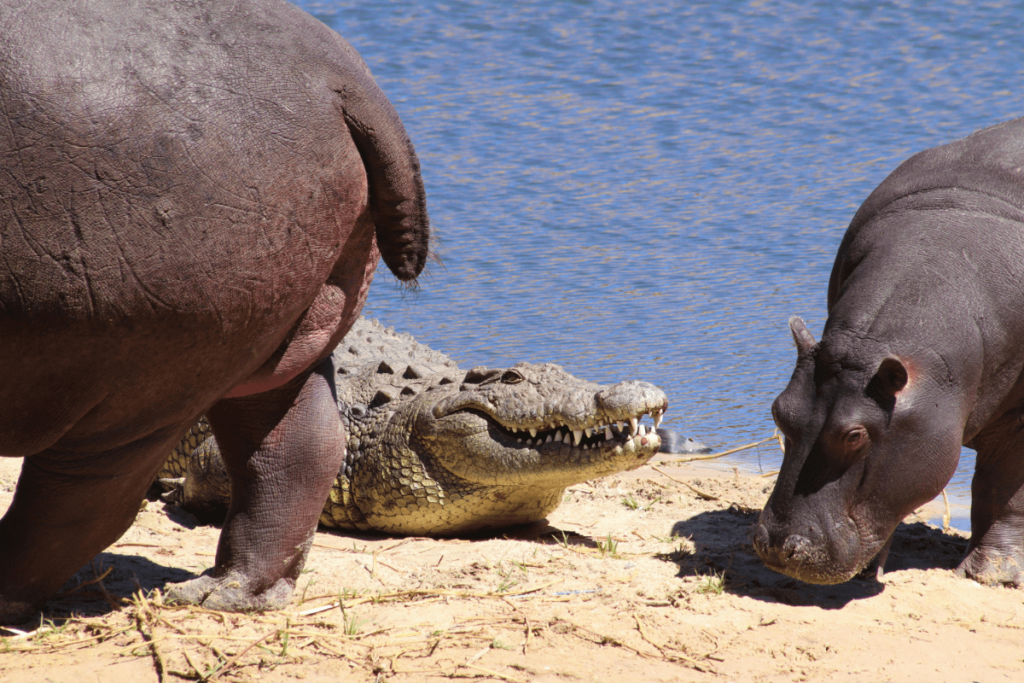
5. Behavioral Differences
5.1. Temperament and Aggressiveness
Crocodiles are generally more aggressive than alligators, particularly the Saltwater Crocodile, known for its territorial nature and willingness to attack anything that enters its domain. This species is responsible for more human fatalities each year than any other crocodilian.
Alligators, in contrast, tend to be more reclusive and less likely to engage with humans unless provoked. They are more likely to flee when approached, although they can be dangerous, especially during the breeding season when they are more protective of their nests.
For more insights into predator behavior and dominance in the animal kingdom, check out our article on The Ranks of Wolf Packs
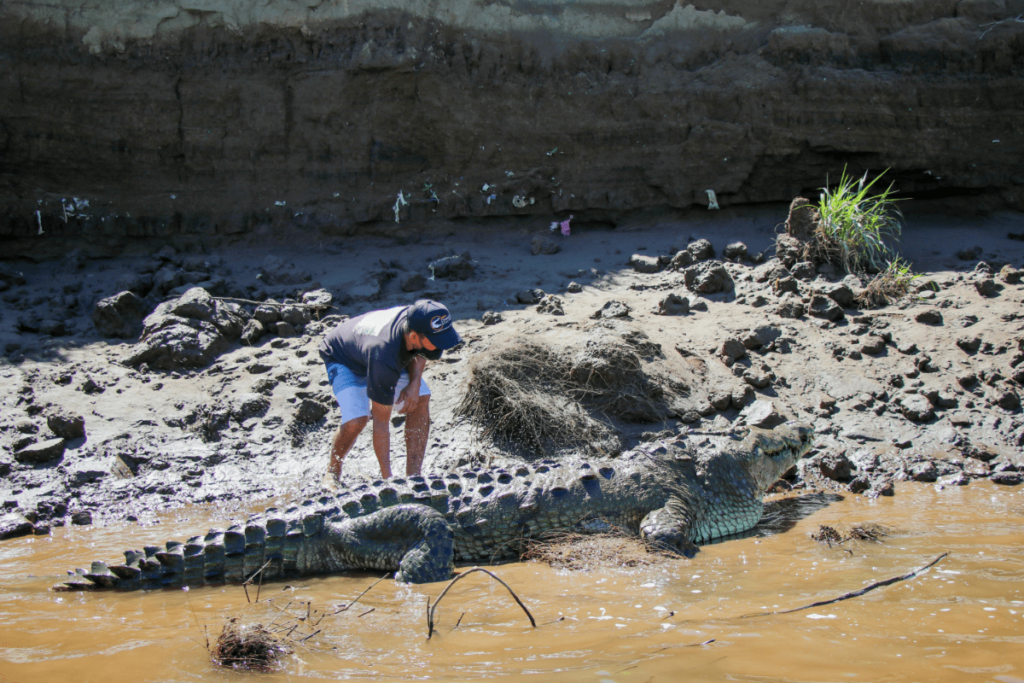
5.2. Hunting Techniques and Diet
Alligators primarily feed on fish, birds, and small mammals, often ambushing their prey by remaining motionless in the water until the right moment to strike. Their hunting style relies on stealth and the element of surprise.
Crocodiles have a more varied diet, including fish, birds, mammals, and even larger animals like zebras and wildebeest. They are more opportunistic feeders, capable of taking down much larger prey due to their size and strength.
Crocodiles often use a technique called the “death roll” to subdue their prey, a behavior where they grab the prey and roll rapidly in the water to disorient and drown it.
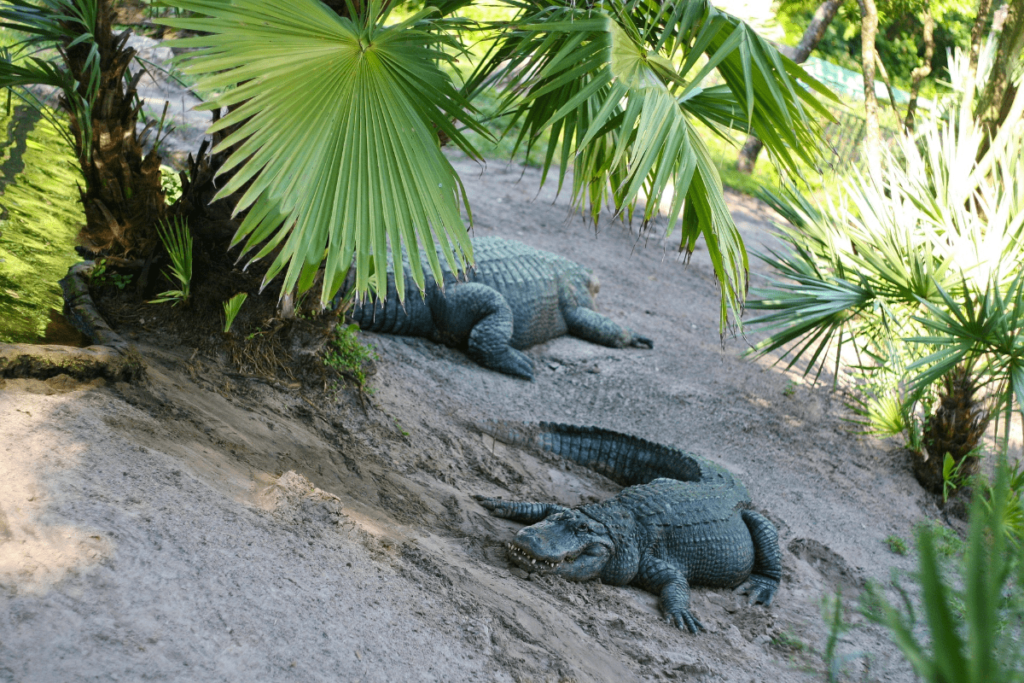
5.3. Social Behavior and Communication
The debate of Alligator vs Crocodile often arises due to their similar appearances, but their behaviors set them apart.
Both alligators and crocodiles are generally solitary animals, but crocodiles are known to be more social, often seen basking in groups. These groups, called “basks” or “floats,” can include multiple individuals of different sizes.
Crocodiles communicate through a variety of vocalizations, body postures, and chemical signals. They are known to produce low-frequency sounds that can travel long distances underwater, helping them communicate with other crocodiles in their territory. Alligators, while more solitary, are also vocal, particularly during the mating season when males bellow to attract females.
To learn about another apex predator, you might be interested in our article on the Wolverine Animal: The Fiercest Predator in the Animal Kingdom.
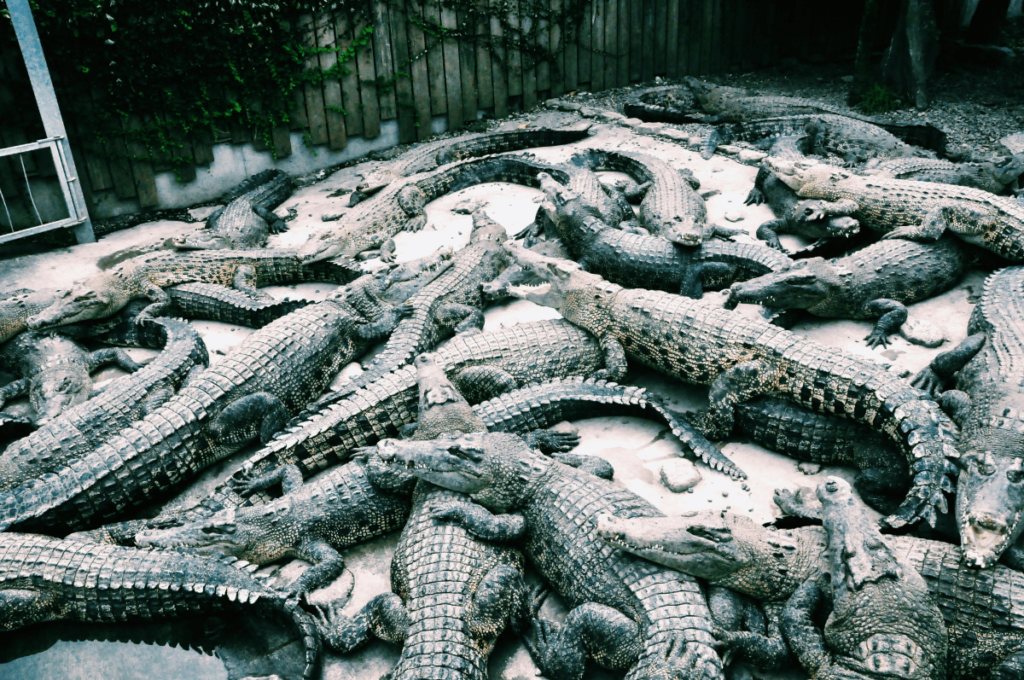
5.4. Activity Patterns (Nocturnal vs. Diurnal)
Alligators are primarily nocturnal, being more active during the night when they hunt and patrol their territory. This nocturnal behavior helps them avoid the heat of the day and take advantage of the cover of darkness to ambush prey.
Crocodiles, however, can be both nocturnal and diurnal, depending on the species and environmental conditions. Some species, like the Nile Crocodile, are known to bask in the sun during the day to regulate their body temperature and hunt at night.
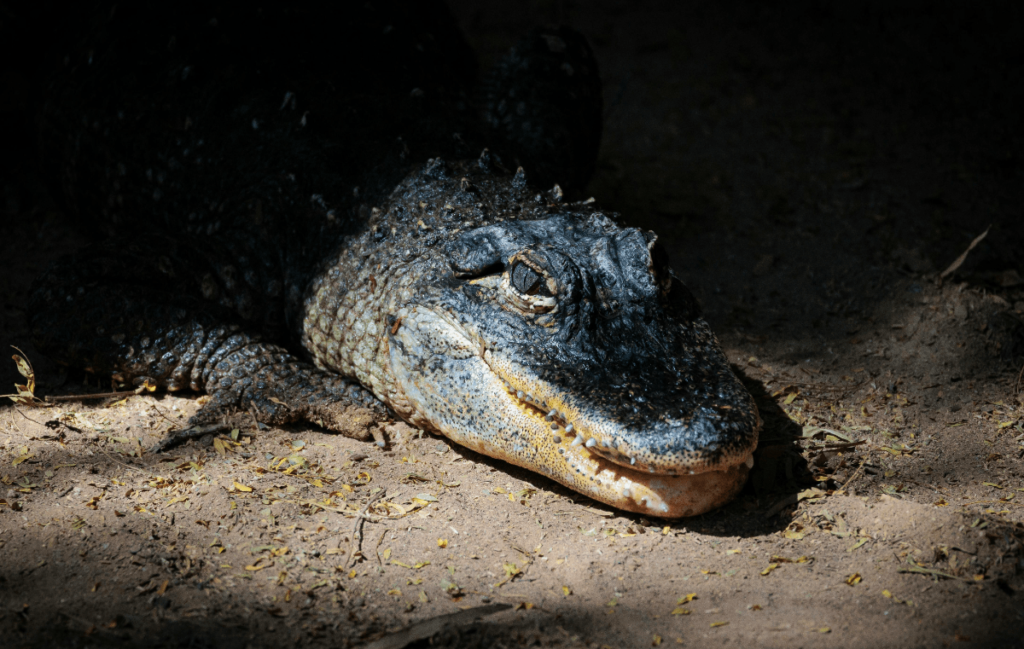
6. Reproduction and Lifespan
6.1. Mating Behaviors
Both alligators and crocodiles engage in elaborate courtship displays during the breeding season. Alligators are known for their impressive bellowing sounds, which can be heard over long distances and are used by males to attract females. They also produce infrasound vibrations that ripple across the water’s surface, further signaling their presence to potential mates.
Crocodiles, on the other hand, engage in more physical displays, such as splashing, bubble-blowing, and even head-slapping the water. These behaviors are combined with vocalizations to establish dominance and attract females.
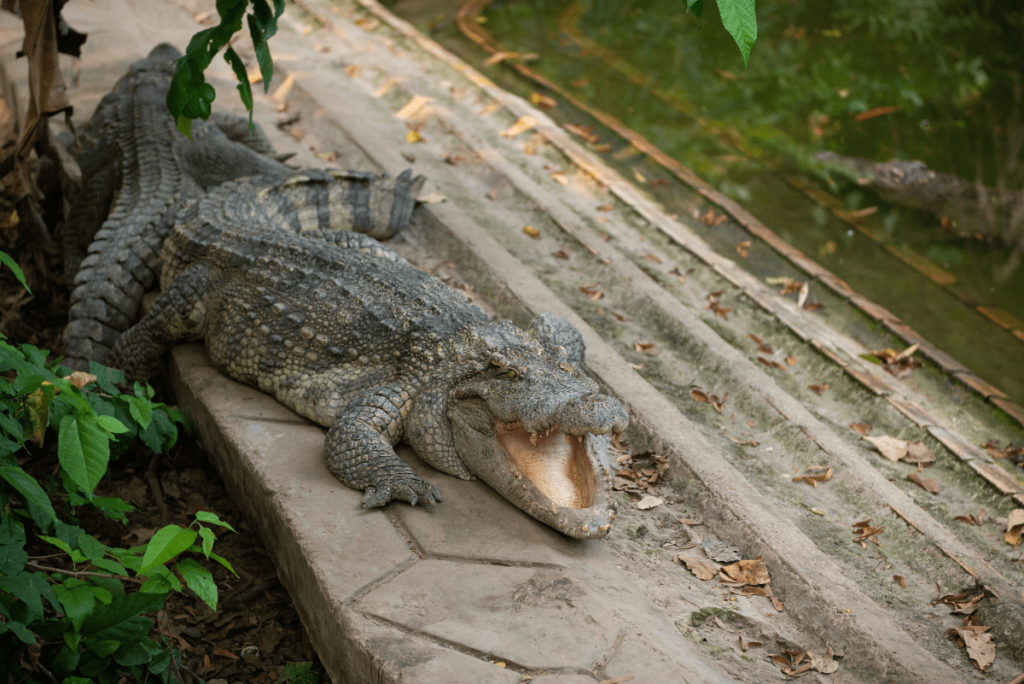
6.2. Nesting and Egg Care
After mating, both alligators and crocodiles build nests to lay their eggs. Alligators prefer to construct mound-like nests made from vegetation and mud, which provide insulation and protection for the eggs. Female alligators are highly protective of their nests, guarding them from predators and maintaining the right temperature to ensure successful incubation.
Crocodiles, depending on the species, may build similar nests or dig holes in sandy or muddy banks. They are also protective of their nests, and some species, like the Saltwater Crocodile, are known to transport their hatchlings to the water using their mouths.
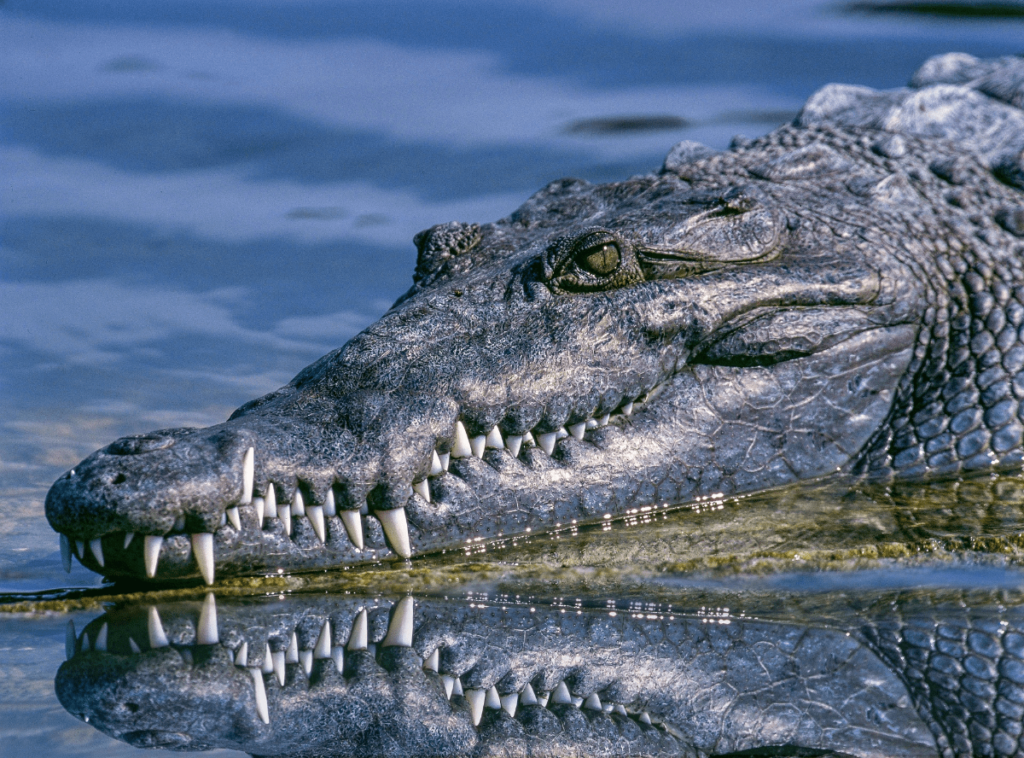
6.3. Lifespan and Growth
The average lifespan of alligators in the wild is about 35-50 years, with some individuals living longer under optimal conditions. Crocodiles tend to live longer, with some species, such as the Saltwater Crocodile, reaching up to 70-100 years in the wild.
The lifespan of these reptiles is influenced by factors such as habitat quality, food availability, and human activity. Both alligators and crocodiles continue to grow throughout their lives, although their growth rate slows significantly after reaching maturity.
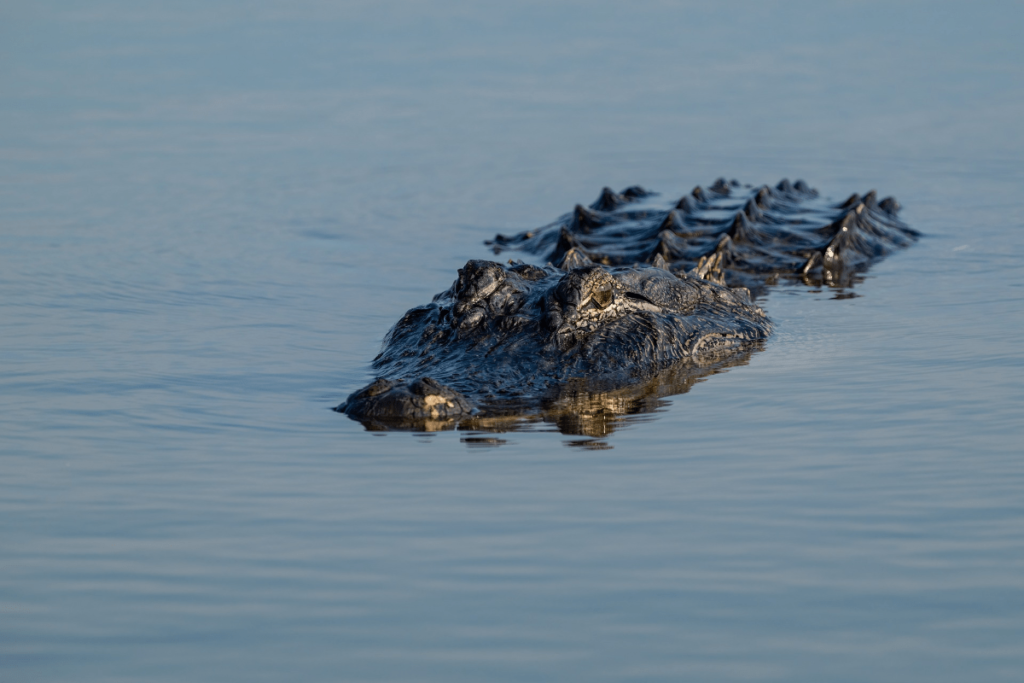
7. Conservation Status and Threats
7.1. Alligator Conservation Efforts
The American Alligator is one of the great conservation success stories. Once on the brink of extinction due to overhunting and habitat loss, it has made a remarkable recovery thanks to legal protections, habitat restoration, and regulated hunting programs.
Today, the American Alligator is listed as “Least Concern” on the IUCN Red List, with a population that exceeds one million individuals. The Chinese Alligator, however, remains critically endangered, with efforts to breed and reintroduce them into the wild ongoing but challenged by continued habitat degradation.
The Crocodile vs Alligator distinction is crucial for understanding their unique roles in their respective ecosystems.
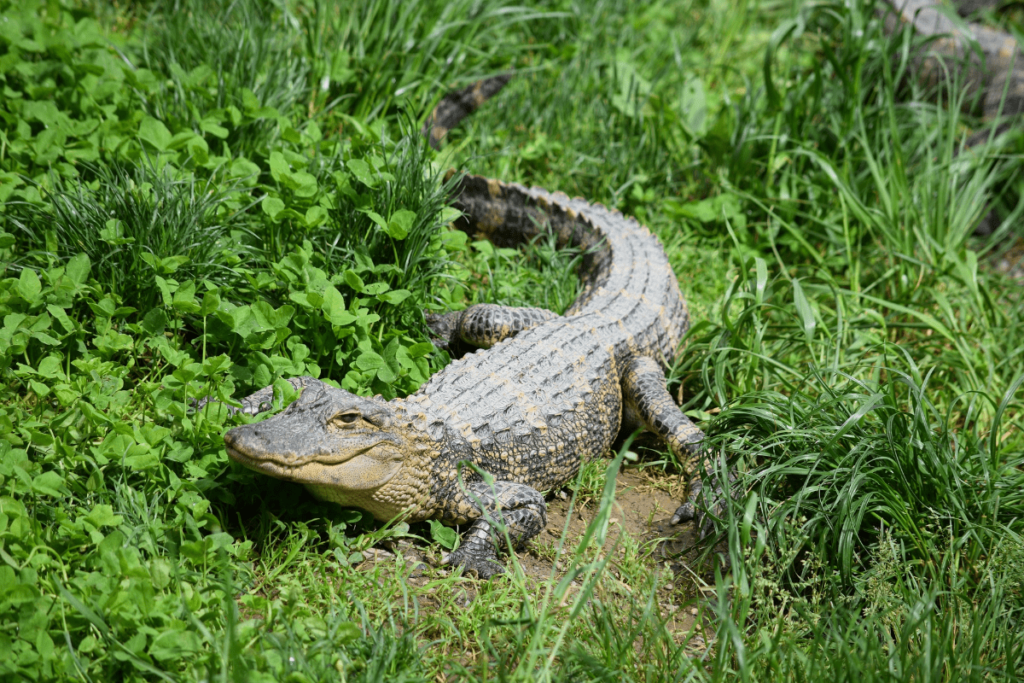
7.2. Crocodile Conservation Efforts
Crocodile conservation varies significantly by species. The Saltwater Crocodile, for instance, is not considered endangered and has a stable population, thanks in part to its wide distribution and adaptability.
However, other species, such as the Philippine Crocodile (Crocodylus mindorensis), are critically endangered, with small populations and limited habitats. Conservation efforts for crocodiles include habitat protection, anti-poaching measures, and community education programs aimed at reducing human-wildlife conflict.
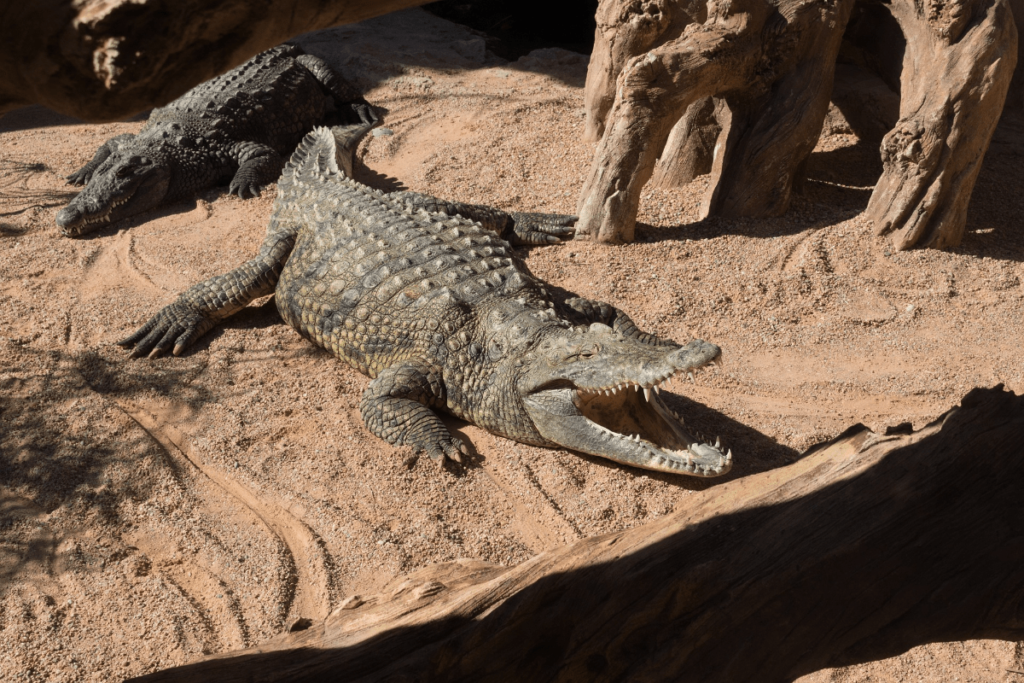
7.3. Threats Facing Alligators and Crocodiles
Both alligators and crocodiles face numerous threats, including habitat destruction, climate change, pollution, and illegal hunting. Wetland drainage and development continue to shrink the habitats of these reptiles, leading to increased encounters with humans.
Climate change poses a particular threat to alligators, as rising temperatures can skew the sex ratios of hatchlings, with warmer temperatures producing more males. Pollution, particularly from pesticides and heavy metals, can affect the health and reproductive success of both alligators and crocodiles.
Illegal hunting, although reduced by conservation laws, still poses a risk, particularly in regions where crocodile skins are highly valued.
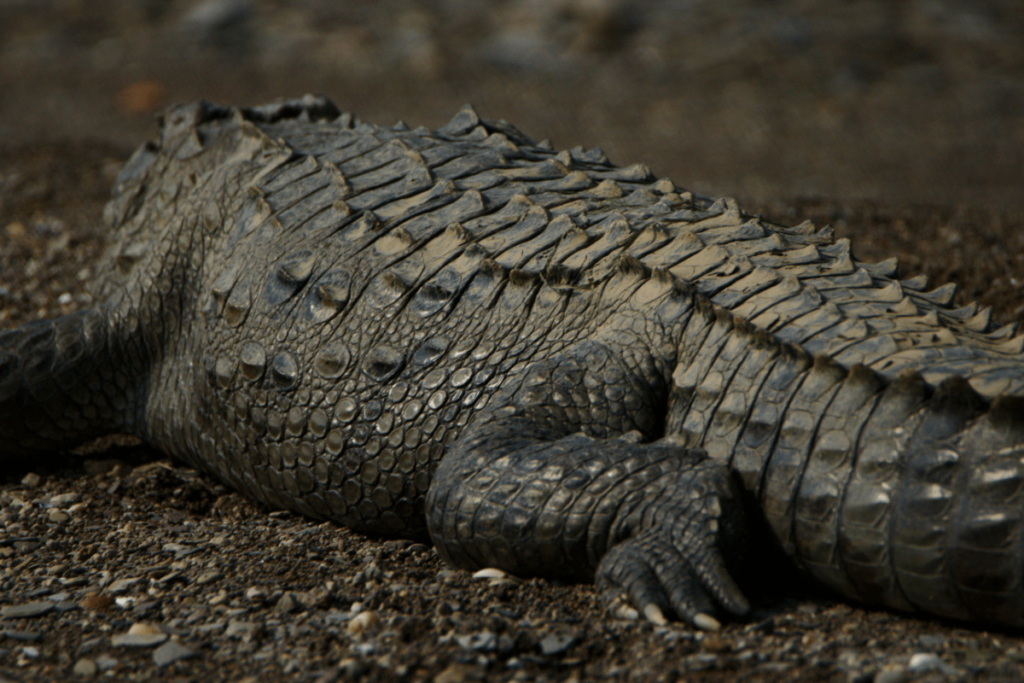
8. Comprehensive Difference Table crocodile vs alligator:
| Feature | Alligators | Crocodiles |
|---|---|---|
| Family | Alligatoridae | Crocodylidae |
| Common Species | American Alligator (Alligator mississippiensis), Chinese Alligator (Alligator sinensis) | Nile Crocodile (Crocodylus niloticus), Saltwater Crocodile (Crocodylus porosus), American Crocodile (Crocodylus acutus) |
| Geographic Distribution | Southeastern U.S. (American Alligator), Yangtze River Basin (Chinese Alligator) | Africa, Southeast Asia, Northern Australia, parts of the Indian subcontinent (various species) |
| Size | Up to 13-15 feet (4-4.5 meters), up to 1,000 pounds (450 kilograms) | Up to 23 feet (7 meters) and over 2,200 pounds (1,000 kilograms) |
| Snout Shape | Broad, U-shaped | Narrow, V-shaped |
| Teeth Visibility | Lower teeth are hidden when the mouth is closed | Lower teeth are visible when the mouth is closed |
| Coloration | Darker, often almost black | Lighter, olive-brown |
| Skin Texture | Smoother | Rougher and more rugged |
| Habitat | Freshwater environments such as rivers, lakes, swamps, and marshes | Both freshwater and saltwater environments |
| Salinity Tolerance | Less tolerant of saltwater, can survive in brackish water | Highly adaptable, can live in both freshwater and saltwater |
| Behavior | Generally less aggressive, more reclusive | More aggressive, particularly in species like Saltwater Crocodile |
| Hunting Technique | Ambush predator, primarily feeds on fish, birds, and small mammals | Opportunistic feeder, can take larger prey, uses “death roll” |
| Social Behavior | More solitary, less social | More social, can be seen basking in groups |
| Communication | Vocal, particularly during mating season | Vocal, uses a range of sounds and body postures for communication |
| Reproduction | Constructs mound-like nests from vegetation and mud | Builds nests or digs holes in sandy/muddy banks, sometimes transports hatchlings to water |
| Average Lifespan | About 35-50 years | Up to 70-100 years in some species |
| Conservation Status | American Alligator: Least Concern; Chinese Alligator: Critically Endangered | Varies by species, with some like the Saltwater Crocodile being stable and others like the Philippine Crocodile being critically endangered |
Frequently Asked Questions:
Q: Alligator vs Crocodile Size
A: Crocodiles are generally larger than alligators. The largest crocodile species, the Saltwater Crocodile, can grow up to 23 feet (7 meters) and weigh over 2,200 pounds (1,000 kilograms). In contrast, the American Alligator typically reaches about 13-15 feet (4-4.5 meters) and weighs around 500-1,000 pounds (230-450 kilograms).
Q: Which is more dangerous, an alligator or a crocodile?
A: Crocodiles are considered more dangerous than alligators. They are more aggressive, particularly species like the Nile Crocodile and the Saltwater Crocodile, which are responsible for the majority of crocodile attacks on humans. Alligators are less aggressive and tend to avoid humans unless provoked or threatened.
Q: Are crocodiles bigger than alligators?
A: Yes, crocodiles are generally bigger than alligators. While both can grow to impressive sizes, the largest crocodile species can surpass the size of the largest alligators, particularly the Saltwater Crocodile, which is the largest living reptile in the world.
Q: Which is bigger, an alligator or a crocodile?
A: Crocodiles are bigger than alligators, especially when comparing the largest species of each. The Saltwater Crocodile can grow significantly larger than the American Alligator.
Q: Are alligators and crocodiles related?
A: Yes, alligators and crocodiles are related. Both belong to the order Crocodylia, which also includes caimans and gharials. Despite their similarities, they belong to different families: Alligators are part of the Alligatoridae family, while crocodiles belong to the Crocodylidae family.
Conclusion
Understanding the differences between alligators and crocodiles is not only fascinating but also important for appreciating these remarkable reptiles. The Alligator vs Crocodile question often comes down to their physical features, such as their jaw structure, with alligators having a wider, U-shaped jaw compared to the V-shaped jaw of crocodiles. While they share many similarities, their distinct physical traits, behaviors, and habitats highlight the diversity within the Crocodylia order. Both alligators and crocodiles play crucial roles in their ecosystems, from controlling prey populations to shaping their habitats.
As we wrap up this Alligator vs Crocodile discussion, it’s clear that both animals have adapted remarkably well to their habitats, showcasing nature’s incredible diversity. Conservation efforts have successfully protected some species, but challenges remain, particularly for those facing habitat loss and climate change. By continuing to study and conserve these ancient reptiles, we can ensure that they remain a vital part of our planet’s biodiversity for generations to come.
